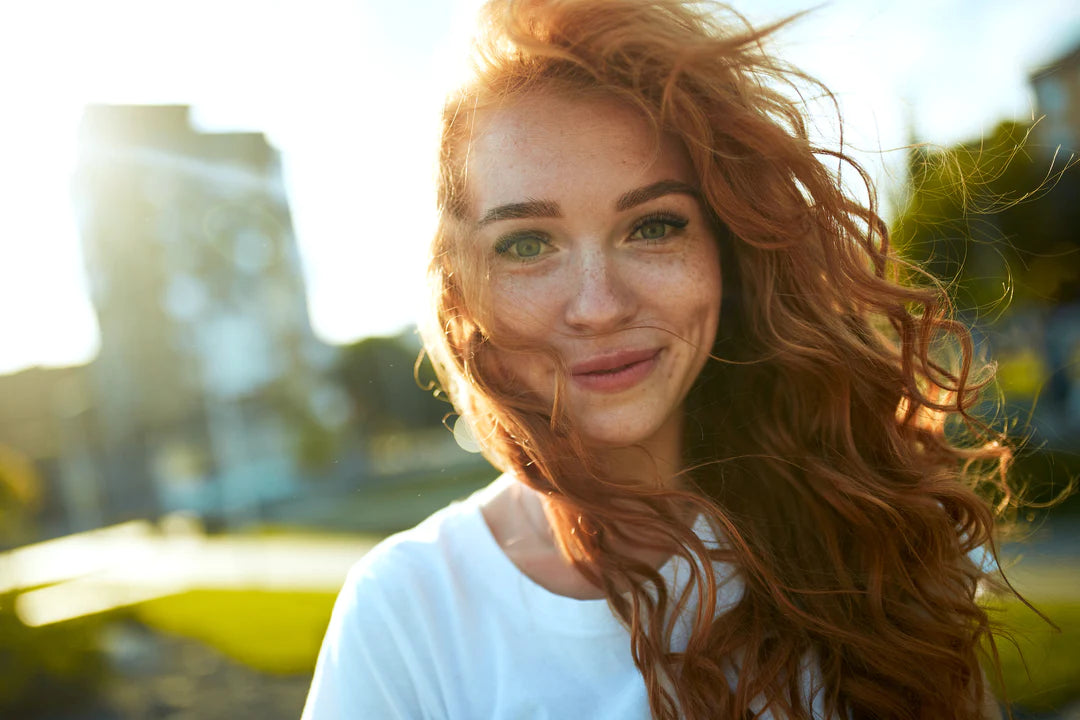
The Truth About PMS and Acne
S torytime: As a little person, I thought periods were the coolest! I couldn't wait to become a "woman" and gain the advantage above all of my non-period friends. It was a destiny I knew I must accept and one I would gladly embrace, or so I thought!
All the women in my life had forgotten to mention one teeny-tiny issue... the excruciating, mind-numbing pain that would overwhelm my entire being!
At nine years old (yes, NINE), I couldn't believe that my body would betray me the way it had! I felt like someone had stabbed me in the stomach, and I had the red evidence to prove it.
So, I decided that the only sensible thing left to do was create a list of people that I would give all of my stuffed animals to...I mean, after all, they couldn't be motherless.
As silly as my PMS story is, we all have our own first-time story with Little Red Riding Hood. Most of us understand the cramping, the bloating, and the emotional shifts (that we will deny if a guy comments on it), but what's the deal with PMS acne?
For years, I would experience the breadcrumb acne trail that always led to a period, but I never understood why my face got that way.
But, today, I can proudly report that I rarely deal with PMS acne.
So, how did I save my face from the curse of PMS?
You'll just have to keep reading to find out!
Is PMS Acne Real?
So, the short answer is yes. PMS acne is real. And even though I wish it were a dream, it's not something that wishful thinking can poof away.
There is a scientific rationale for the relationship between PMS and acne. It all starts with your hormones and where you are in your cycle.
Here's a breakdown of your cycle to help...
The Beginning of Your Cycle
The party starts, and your period has made its presence known. With cramping, bloating, sometimes the runs, and even more times fatigue, you are now on the PMS train.
This is the point within the cycle that you may experience the most acne due to hormones like estrogen and progesterone dropping in an epic decline. This decline unveils the nemesis testosterone, which causes a massive overproduction of oil.
The increase in oil mixes with existing bacteria and creates the breeding ground for an inflamed, nasty mess of pimples. And while this may make you feel like hiding under the covers until your period ends, how many of us have that luxury?
During this time, my suggestion is to pay close attention to cleansing two times a day to stay on top of the excess oil and bacteria. Our Radiant Cleansing Nectar can not only remove the gunk but also replenish the skin with healing nutrients. That's your best bet!

The Wednesday of All Cycles
In the middle of your cycle, the acne parade should be slowing down as your period creates an imbalance of a hormone-like substance that aids in controlling inflammation in the skin.
The name of this substance is prostaglandin. When prostaglandin levels are off, your skin can freak out and leave irritated and dry skin behind. So while the acne storm may be over (for now), you can find yourself in a wasteland of flaky, itchy skin.
Can anything help? Exfoliating and moisturizing will be a saving grace during this time. Make sure to use the right exfoliant and moisturizer, or your face will remain dry like a Little Debbie cake without milk.
My suggestion is the Illuminating Essence Exfoliating Mask and the Flawless Nourishment Cream. Both will help protect the skin's natural barriers and provide nutrients in your skin's time of need!

The End of the Road
You have made it to the end of your period!
By now, your skin has survived the rollercoaster of events that so ungraciously occurred in the days before. And the end of your period is your revenge for all those bad skin days! Your estrogen levels are restored and your body is returning to normal.
The overproduction of oil should subside now, and your skin should start recovering. This is what I like to call "the honeymoon" stage of the PMS acne cycle!
Everything is lovely, looking good, and feeling unbelievable! Your skin is dewy, and glowing, and you have every reason to be feelin' yourself!
You might find that your skin is supple and thriving as your healthy skin cells are developing. Score!
The Calm After the Storm
Oh, ovulation, such beautiful things happen during this time! Not only is it your baby-making window, but it’s also a fresh start for your skin. You can expect your skin to treat you right as estrogen levels peak. You'll be glowing for days, honey!
Pose in pictures with your friends, make new friends, say hi to people on the street, and call up that gorgeous guy you have a crush on! Now is the time that your skin will reward you!
My suggestion: keep cleansing and start incorporating a serum packed with antioxidants and vitamin C to keep that luminous glow!
Starting Over Again
So, I do hope that you enjoyed your unstoppable skin, because you're about to go on the merry-go-round all over again! On days 17-28, estrogen is taking a backstage to testosterone and progesterone.
As T. and P. rise, oil production begins being extra all over again and sets up the perfect situation for acne. You are back in the acne zone.
Additional Tips for Preventing Period Acne
PMS acne is a thorn in most of our sides, but there are ways to prevent it and get rid of it on contact. Applying the tips above, along with a few I have here, will keep your skin intact all month long.
Although using the right products is one of the primary ways to achieve optimal skin, there are additional tips to get ahead of the game. The first is to make sure that you're staying up on your vegetables.
Believe it or not, veggies can help control excess hormones. The best vegetables to keep you in check are cucumbers, broccoli, beets, and kale.
Earthy greens can help excrete excess hormones that are creating further acne. They might not be your favorite, but your skin and body will reward you!
Achieving clear skin through PMS can seem impossible, but you've got this! All it takes is a little prevention and a lot of patience, but you'll be glad you committed to getting your skin on track!





